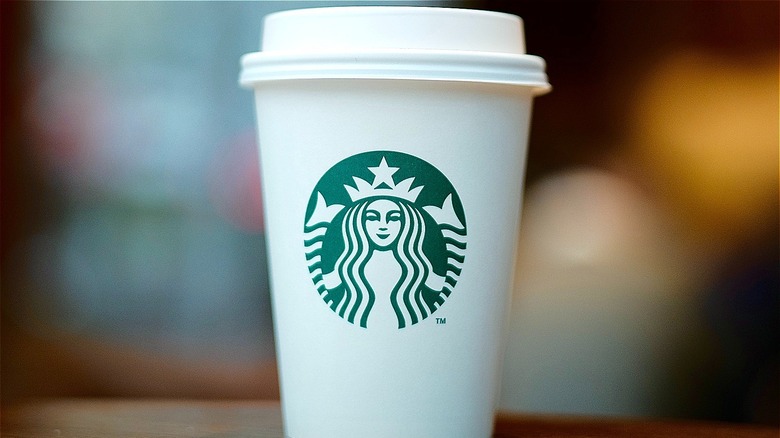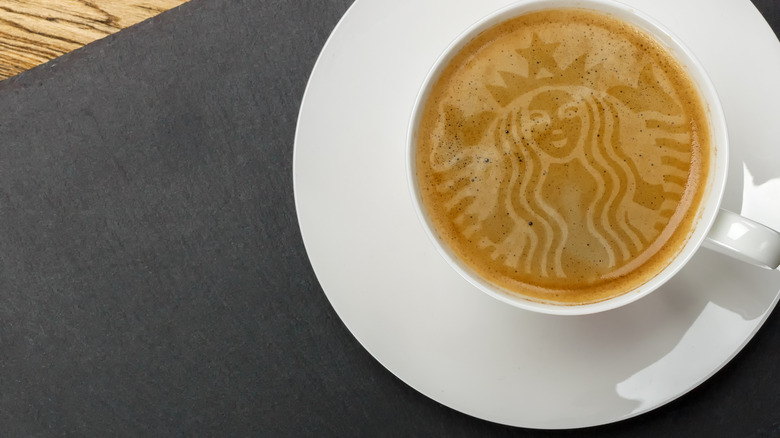The Real Reason It Took So Long For Starbucks To Come To Italy
For a cafe with more Italian words on the menu than your local pasta joint, Starbucks sure took its time getting over to Italy. The coffeehouse is famously American, with its humble beginnings as a stall in Seattle's Pike Place market, and its name derived from a character in Herman Melville's great American novel, "Moby Dick," per Britannica. But from the macchiatos to the naming system (venti is Italian for 20; as in, 20 ounces), Starbucks has always had tremendous influence from il Bel Paese flowing through its veins. According to Britannica, early Starbucks evangelist Howard Schultz even used Milanese coffeehouses as a blueprint for expansion in the U.S. And yet, it took Starbucks nearly 50 years in the biz before its coffee shops reached Italian shores. What the beans, Starbucks?
According to Starbucks' website, the company had its humble beginnings on the cheery streets of Seattle in 1971. Forbes says that the first Italian Starbucks opened its doors in 2018, with a 25,000 square foot roastery in Milan, whose Tuscan marble, liquid nitrogen affogato station, and augmented reality-configured walls are a symbol of just how far the coffee slingers have come in those 47 years. Forbes seems to think Starbucks' delayed arrival is a combination of three things: culture, coffee, and — of course — money, honey.
Cultural coffee differences kept Italian Starbucks a pipe dream for a long time
Eva Del Soldato, a professor at the University of Pennsylvania, tells Forbes that in Italy, coffee isn't just the result of some roasted beans and water; it's a "social right." Culturally, Italians associate the ritual of a morning cappuccino or an espresso in the afternoon with a form of meditation — a way of being mindful of your surroundings and the company you keep. Would Starbucks corporate culture celebrate that interpretation of a cup of joe? Would, for example, the Neapolitan tradition of "caffè sospeso," paying for both your own coffee and one for the next customer who can't afford it, be honored in the Starbucks bottom line? Then there's the coffee itself. Would a country of coffee purists be amenable to a neon purple and blue unicorn frappuccino, for example?
As with all things, time — and money — will tell. Del Soldato explained to Forbes that Italians "tend to view franchises with suspicion," and a €4.5 ($5.22 USD) cappuccino isn't going to go a long way to assuage their fears. Forbes reported that with the opening of the first Starbucks in Milan came a complaint from an Italian consumer group, upset that Starbucks prices were way higher than the Milanese average. The Italian flagship location also stayed closed the longest during the lockdowns caused by COVID-19, as Milan was particularly hard-hit by the virus, according to Reuters. But like Starbucks' 11 other locations in Italy (per Statista), the American coffee house is open and caffeinating once again.

